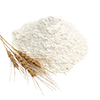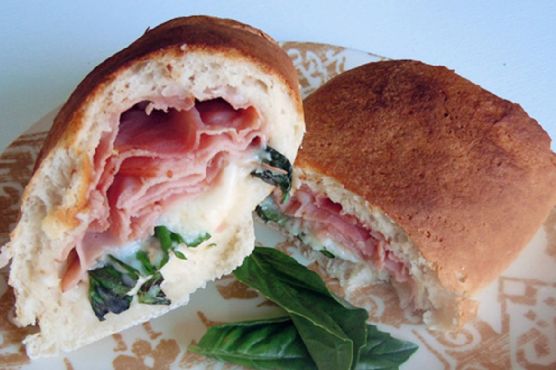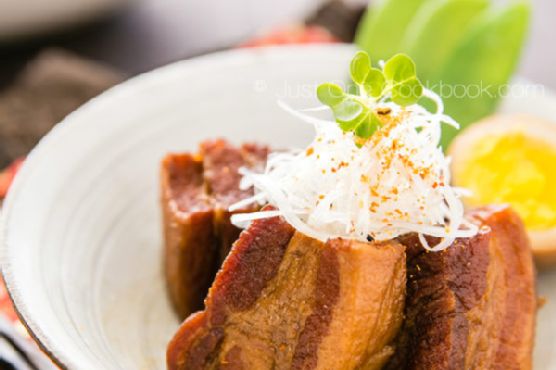Homemade Red Pasta
If you have about 45 minutes to spend in the kitchen, Homemade Red Pasta might be an awesome dairy free and lacto ovo vegetarian recipe to try. One serving contains 426 calories, 19g of protein, and 7g of fat. This recipe serves 4. For 58 cents per serving, this recipe covers 16% of your daily requirements of vitamins and minerals. This recipe from Blogging Over Thyme requires semolina, tomato paste, unbleached flour, and whole eggs. 688 people have made this recipe and would make it again. It works well as a main course. Overall, this recipe earns a solid spoonacular score of 75%. Users who liked this recipe also liked Braised Oxtails & Homemade Red Wine Pasta, Vegan Roasted Red Bell Pepper Sauce | Easy Homemade Pasta Sauce s, and Pastan in Roasted Red Bell Pepper Sauce | Roasted Red Pepper Pasta | Easy Pasta s For Kids.
Servings: 4
Ingredients:
1/2 cup semolina (plus more for dusting)
2 tablespoons tomato paste
2 1/3 cups all-purpose unbleached flour
4 whole large eggs
Equipment:
stand mixer
bowl
measuring cup
pasta machine
plastic wrap
spatula
whisk
baking sheet
Cooking instruction summary:
Combine all-purpose flour and semolina in stand mixer bowl. Using the dough hook attachment, mix over low speed (2) until flours are well incorporated.In separate bowl or measuring cup, combine eggs and tomato paste. Whisk together until incorporated (it is ok if a few clumps of tomato paste are here and there).Over low speed, slowly pour in the eggs into the center of the bowl. Continue to mix over low speed until dough begins to come together—occasionally scraping down the sides with a spatula to help the process.Once dough is mostly incorporated (a shaggy mass), turn off stand mixer and dump the contents of the bowl onto a clean countertop. Don’t worry if there is a small amount of dry ingredients not incorporated yet.Start kneading the dough, using the palms and heels of your hand—the dough should not be sticky to the touch.. Once the dough comes together, discard any dried bits or leftover dry ingredients—depending on humidity and the size of your eggs (even large ones can vary in weight), this can vary from batch to batch. **If for some reason, your dough is very dry, add a teaspoon of water at a time and incorporate. Alternatively, if it seems too tacky, dust your hands and countertop with more all-purpose flour.Continue to knead the dough for an additional 10-15 minutes, until the dough is very elastic and supple.Wrap the dough in plastic wrap tightly and allow to rest at room temperature for 45 minutes to an hour. This will allow the gluten in the dough to relax and any excess flour to be absorbed.Once dough has rested, divide the dough into six balls. Take one at a time (cover the rest with plastic wrap to prevent from drying out), flatten with palms into a disk and roll (at largest-width setting) using the pasta machine. Fold into an envelope (bring side into center, repeat with other side—open seams facing vertically into machine) and repeat several times at same setting until dough is smooth.Roll pasta dough into desired thickness. *For thinner, delicate (eg. cream) pasta sauces, roll pasta dough very thin. **If you plan on serving your pasta with a hearty, rougher sauce, roll a slightly thicker pasta. Repeat with remaining pasta dough until all the pasta is rolled out.Allow rolled dough sheets to dry slightly at room temperature (I hang them on whatever I can find in my kitchen) until no longer tacky (this will ensure that shaped pasta will not stick together). The sheets should feel leathery to the touch.Shape pasta using pasta machine attachment—I made mine into fettucine. Place the cut pasta onto a baking sheet, coated with a thin layer of semolina. This will keep the pasta from sticking to each other. Store covered with plastic wrap in the fridge or cook immediately.Cook pasta in large amount of boiling, salted (should taste like the ocean) water until al dente. Prepare as desired.
Step by step:
1. Combine all-purpose flour and semolina in stand mixer bowl. Using the dough hook attachment, mix over low speed (
2. until flours are well incorporated.In separate bowl or measuring cup, combine eggs and tomato paste.
3. Whisk together until incorporated (it is ok if a few clumps of tomato paste are here and there).Over low speed, slowly pour in the eggs into the center of the bowl. Continue to mix over low speed until dough begins to come together—occasionally scraping down the sides with a spatula to help the process.Once dough is mostly incorporated (a shaggy mass), turn off stand mixer and dump the contents of the bowl onto a clean countertop. Don’t worry if there is a small amount of dry ingredients not incorporated yet.Start kneading the dough, using the palms and heels of your hand—the dough should not be sticky to the touch.. Once the dough comes together, discard any dried bits or leftover dry ingredients—depending on humidity and the size of your eggs (even large ones can vary in weight), this can vary from batch to batch. **If for some reason, your dough is very dry, add a teaspoon of water at a time and incorporate. Alternatively, if it seems too tacky, dust your hands and countertop with more all-purpose flour.Continue to knead the dough for an additional 10-15 minutes, until the dough is very elastic and supple.Wrap the dough in plastic wrap tightly and allow to rest at room temperature for 45 minutes to an hour. This will allow the gluten in the dough to relax and any excess flour to be absorbed.Once dough has rested, divide the dough into six balls. Take one at a time (cover the rest with plastic wrap to prevent from drying out), flatten with palms into a disk and roll (at largest-width setting) using the pasta machine. Fold into an envelope (bring side into center, repeat with other side—open seams facing vertically into machine) and repeat several times at same setting until dough is smooth.
4. Roll pasta dough into desired thickness. *For thinner, delicate (eg. cream) pasta sauces, roll pasta dough very thin. **If you plan on serving your pasta with a hearty, rougher sauce, roll a slightly thicker pasta. Repeat with remaining pasta dough until all the pasta is rolled out.Allow rolled dough sheets to dry slightly at room temperature (I hang them on whatever I can find in my kitchen) until no longer tacky (this will ensure that shaped pasta will not stick together). The sheets should feel leathery to the touch.Shape pasta using pasta machine attachment—I made mine into fettucine.
5. Place the cut pasta onto a baking sheet, coated with a thin layer of semolina. This will keep the pasta from sticking to each other. Store covered with plastic wrap in the fridge or cook immediately.Cook pasta in large amount of boiling, salted (should taste like the ocean) water until al dente. Prepare as desired.
Nutrition Information:
covered percent of daily need















